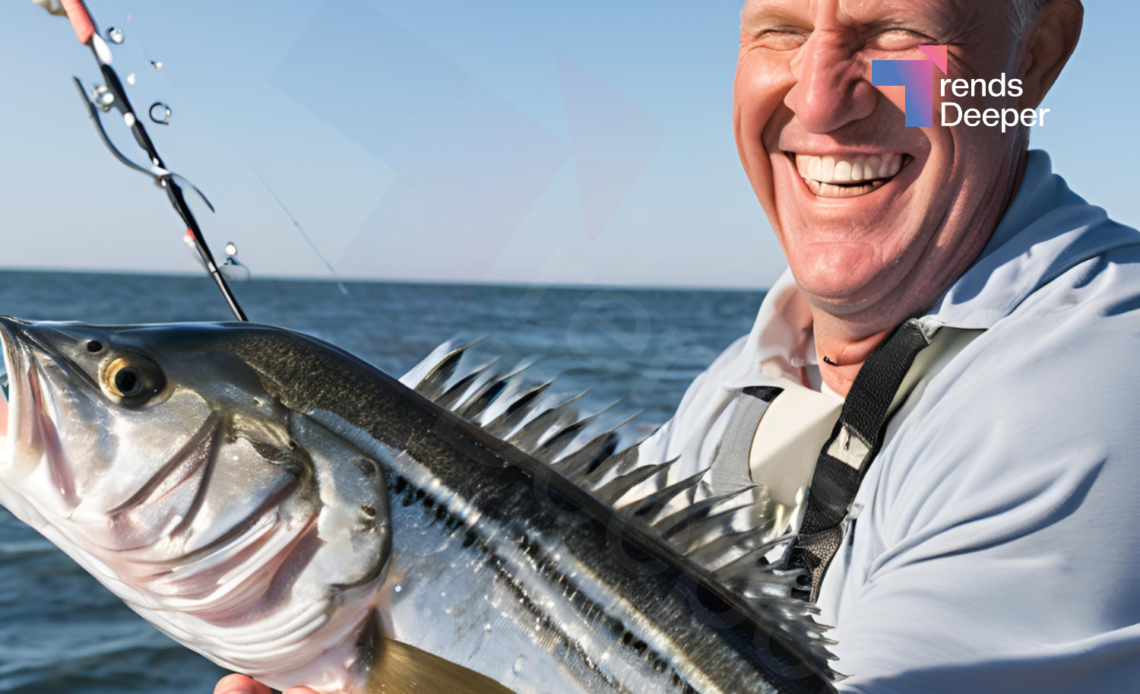In the world of fishing, particularly for striped bass enthusiasts, a technique known as the sink stop striper line is gaining attention.
While it might sound technical, it’s a method that has proven effective in helping anglers target striped bass, also known as stripers, with more precision and success.
A sink stop striper line refers to a fishing setup where a sinker is placed to bring the bait down to the desired depth, while a stopper prevents the sinker from sliding too far along the line.
This allows the angler to control how deep the bait sinks and, more importantly, where it stays in the water column. The technique is especially useful when fishing for stripers, a species known for moving through varying depths, depending on the conditions of the water and the time of year.
Stripers are a sought-after game fish due to their size and the challenge they pose. For many anglers, targeting these fish is as much about skill as it is about understanding their habits.
The sink stop striper line gives fishermen the flexibility they need to adjust to those habits, offering control over how the bait moves and presents itself.
One experienced angler noted, “This setup changed how I approach fishing for stripers. It allows me to keep my bait where the fish are without constantly adjusting the rig.”
His observation highlights why this method has become more popular, especially in tidal areas where water conditions are unpredictable and fish behavior can change quickly.
For those unfamiliar with the intricacies of striped bass fishing, the sink stop line works by placing a bead or rubber stopper on the line above the sinker.
This stopper keeps the sinker from moving too far, ensuring the bait stays suspended at the ideal depth. In doing so, anglers can adjust their bait position based on where the stripers are feeding, without needing to constantly re-cast or re-adjust their entire line.
The technique isn’t just for seasoned professionals. Even novice anglers have found success using it. An angler new to the method shared, “It simplified things for me. I didn’t have to worry about constantly losing control of my bait’s depth.”
This ease of use has contributed to its rise in popularity, especially among those still learning the nuances of fishing for stripers.
The materials used for a sink stop striper line are relatively simple. Anglers often opt for a variety of stoppers, including beads, rubber stops, or adjustable bobber stops.
The stopper’s main function is to provide control over the sinker’s range of movement, ensuring consistent bait presentation. It’s a versatile setup that can be used in a variety of fishing environments, from deep rivers to coastal areas.
The sink stop striper line represents a blend of innovation and tradition. While the core elements of striped bass fishing—patience, timing, and understanding the fish—remain the same, techniques like this offer anglers an edge. In a sport where slight adjustments can mean the difference between a full catch or an empty boat, precision matters.
As this method continues to gain traction, more anglers are incorporating it into their fishing strategies. The flexibility and control it provides have made it a favorite among those targeting stripers.
Whether in tidal waters, deep riverbanks, or even lakes, the sink stop striper line proves to be an effective and adaptable tool for anglers of all skill levels.
In the broader world of fishing, where tradition and new techniques often intersect, the sink stop striper line stands out for its practicality and simplicity.
For those looking to refine their approach to catching striped bass, it may just be the perfect solution.


